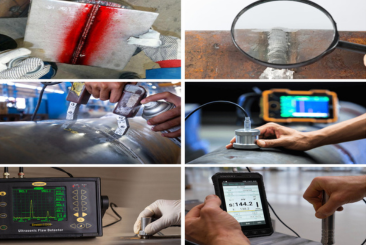Systematic NDT Services

We specialize in delivering high-quality Non-Destructive Testing (NDT) services to ensure precision, reliability, and safety across various industries. With advanced tools and an experienced team, we conduct systematic NDT services to detect material defects, evaluate structural integrity, and support operational safety—without causing damage to tested components.
Our inspectors are qualified as per ASNT Level – II for:
These services are conducted as per industry standards, GFR requirements for pressure vessels, and SMPV (U) Rules, 2016.
Our NDT Services
1. Visual Inspection
A fundamental method for detecting surface defects and irregularities in materials and components.
What We Do:
2. Liquid Penetration Test (LPT) / Dry Penetration Test (DPT)
Used to detect surface-breaking defects such as cracks, seams, and porosity.
What We Do:
3. Magnetic Particle Testing (MPT)
Detects surface and near-surface defects in ferromagnetic materials.
What We Do:
4. Ultrasonic Thickness Measurement (UTM)
Evaluates material thickness to detect corrosion, erosion, or thinning over time.
What We Do:
5. Ultrasonic Flaw Detection Testing
Locates internal flaws and defects within materials.
What We Do:
6. Hardness Testing
Determines the material’s resistance to deformation, ensuring its suitability for specific applications.
What We Do:

